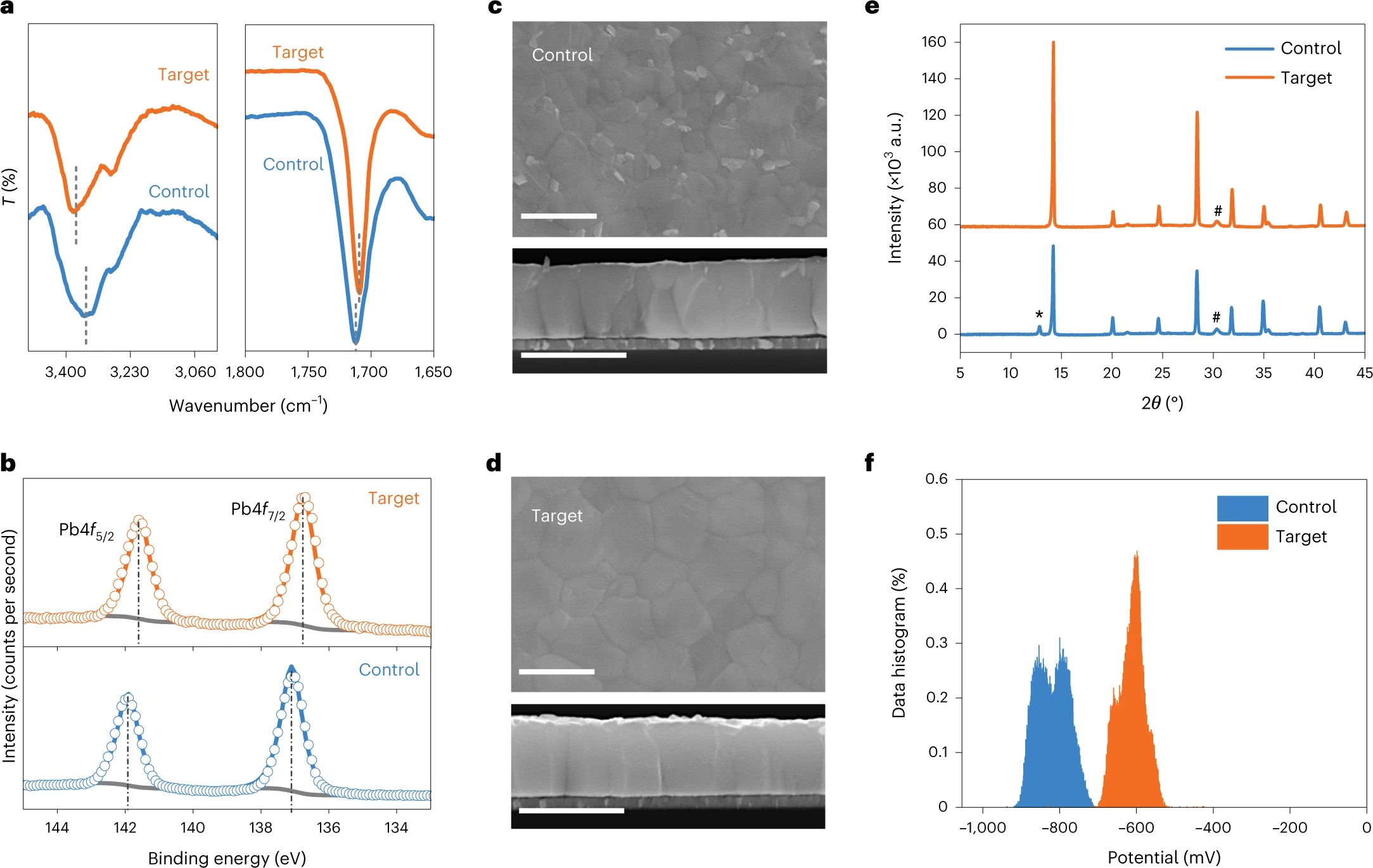Published on nature photonics (10 April 2023)
Author(s): Fengzhu Li, Xiang Deng, Zhangsheng Shi, Shengfan Wu, Zixin Zeng, Deng Wang, Yang Li, Feng Qi, Zhuomin Zhang, Zhengbao Yang, Sei-Hum Jang, Francis R. Lin, Sai‐Wing Tsang, Xian-Kai Chen & Alex K.-Y. Jen
Abstract
Improving the intrinsic film quality of metal halide perovskites is very critical to increase the power conversion efficiency and long-term stability of perovskite solar cells. Here we report a multifunctional, non-volatile additive that can be used to modulate the kinetics of perovskite film growth through a hydrogen-bond-bridged intermediate phase. The additive enables the formation of large perovskite grains and coherent grain growth from bottom to the surface of the film. The enhanced film morphology results in significantly reduced non-radiative recombinations, thus boosting the power conversion efficiency of inverted (p–i–n) solar cells to 24.8% (24.5% certified) with a low energy loss of 0.36 eV. The unencapsulated devices exhibit improved thermal stability with a T98 lifetime beyond 1,000 h under continuous heating at 65 ± 5 °C in a nitrogen-filled glovebox. This effective approach can also be applied to wide-bandgap perovskites and large-area devices to show reduced voltage loss and high efficiency.

a, FTIR spectra of the control and target films. b, Pb4f XPS spectra of the control and target films. c,d, Surface (up) and cross-section (down) SEM images of the control (c) and target (d) perovskite films. Scale bars, 1 μm. e, XRD patterns of the control and target films. Here * denotes the diffraction peak of PbI2, and # denotes the diffraction peak of ITO. f, Statistical distribution of surface potential extracted from the KPFM images.
Read more: https://www.nature.com/articles/s41566-023-01180-6